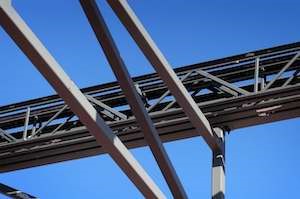Building construction costs rise in Q3
Building construction costs were again on the rise in the third quarter of this year, Statistics Canada reports.
 Residential building construction costs increased 0.6% in the third quarter, following a 1.0% increase in the previous quarter. Non-residential building construction costs rose 0.6% in the third quarter, following a 1.8% increase in the previous quarter.
Residential building construction costs increased 0.6% in the third quarter, following a 1.0% increase in the previous quarter. Non-residential building construction costs rose 0.6% in the third quarter, following a 1.8% increase in the previous quarter.
Year over year, construction costs for residential buildings in the 15-census metropolitan area (CMA) composite rose 2.6% in the third quarter, while non-residential building construction costs saw an increase of 3.4%.
Tariff pressures and supply-chain uncertainties continue to impact Canada's construction sector. The new round of US tariffs (on steel, aluminum, and metal materials) and Canada's corresponding counter-tariffs have increased costs for many materials within divisions such as structural steel and metal fabrications. Respondents noted that these reciprocal steel and aluminum tariffs have put additional pressure on metal-related material prices in the third quarter, adding to overall cost challenges. Builders also reported that securing materials has become more challenging, with longer lead times and fewer reliable sourcing alternatives.
Shortages of skilled workers and rising wages continue to drive up costs in certain regions of the country. The Prairies and Quebec saw steady activity, while other provinces such as Ontario and British Columbia were facing slower demand and delays in new construction starts.
Metal fabrications division shows strong cost growth in residential construction
In the third quarter, residential building construction costs rose across most CMAs, with Quebec (+2.4%) reporting the largest quarterly increase, followed by Regina (+2.2%). Increases were also notable in Saskatoon (+1.5%), Montréal (+1.4%), and Victoria (+1.4%). Calgary (-0.1%) was the only CMA to record a decline in residential construction costs in the third quarter.
At the division level, the metal fabrications division (+2.2%) was among the top contributors to residential building construction costs, while the utilities (+1.6%) and plumbing (+1.2%) divisions trailed closely behind. In contrast, the heating, ventilation and air conditioning, and the fire suppression divisions both declined by 0.6%, recording the lowest quarterly price movements.
London leads non-residential construction cost growth
Costs to construct non-residential buildings increased the most in London (+2.0%) in the third quarter, followed by Québec City (+1.5%). Ottawa (+1.0%), Saskatoon (+1.0%), and Edmonton (+0.8%) also reported moderate quarterly growth. Meanwhile, the smallest increases were seen in St. John's (+0.1%) and Vancouver (+0.1%).
At the composite level, non-residential building construction costs increased across most divisions measured, with the structural steel (+3.0%) and metal fabrications (+2.0%) divisions recording the largest increases. These increases were partly due to higher prices for metal materials, which continue to be affected by import tariffs. While there was moderate growth across divisions, the fire suppression (-1.5%) and the heating, ventilation, and air conditioning (-2.2%) divisions recorded declines.








